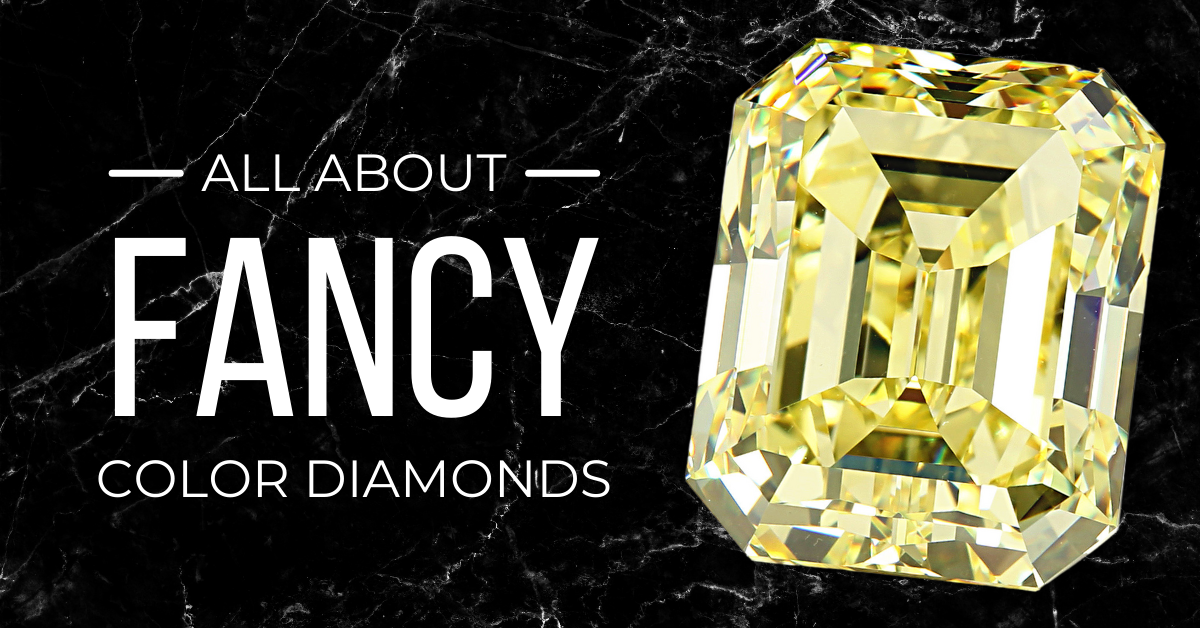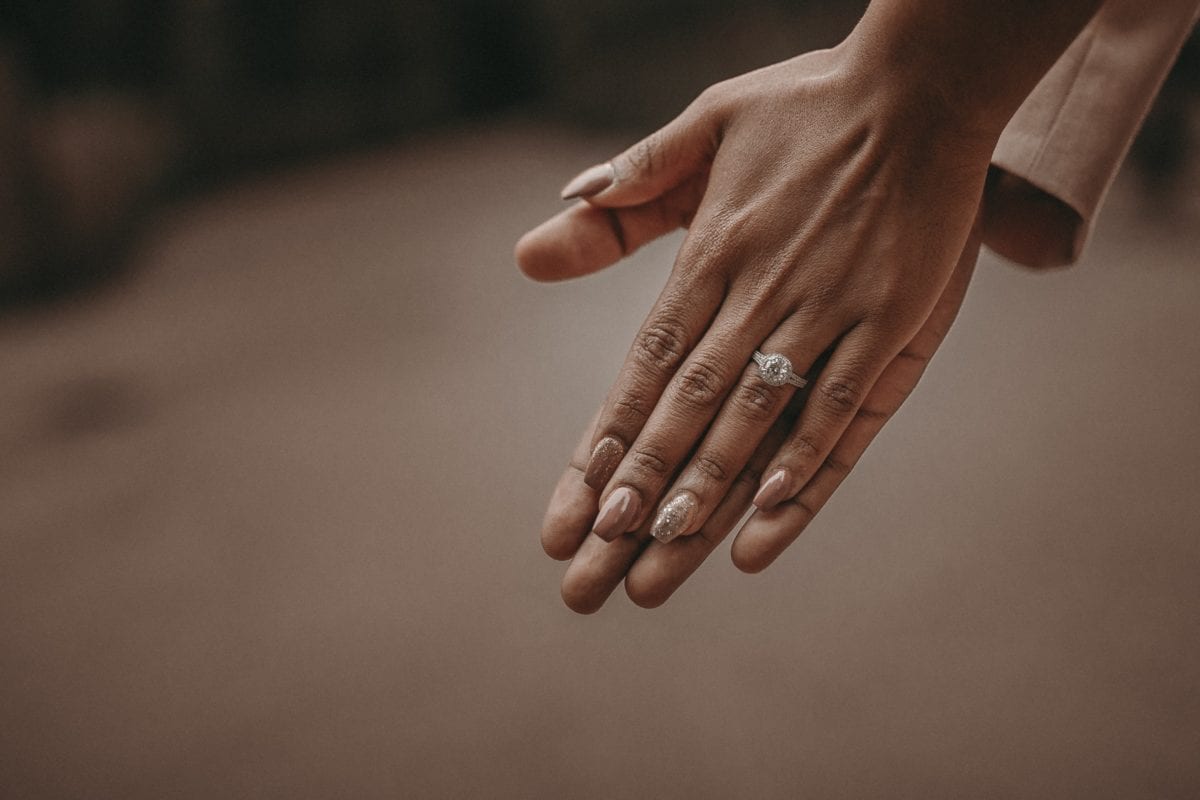Jennifer Lopez’s love don’t cost a thing, but she still got a pretty solid engagement ring from Ben Affleck! J. Lo’s newest engagement ring features an 8.5-carat ultra-rare green diamond with white diamonds. Affleck and Lopez were previously engaged in the early 2000s, so this is technically their second engagement and second engagement ring. The celebrity ring is worth a whopping $5-$7 million! If you’re like us, you might want to learn more about green diamonds and how they come to be. Read on to learn more about this beautiful phenomenon! About Green Diamonds The most common diamond colors are clear, black, and brown. Other colors are much rarer; Bennifer’s first engagement ring was a pink diamond, even more rare than the green one she dawns now. Another rare and highly sought-after color of a diamond includes blue. You may have heard of quite a famous blue diamond: The Hope Diamond. Green diamonds result from specific imperfections in the diamond’s structure, most commonly caused by radiation damage. In a clear diamond, every color gets reflected. However, in a green diamond, radiation from nearby uranium or thorium ore can hit a diamond’s carbon structure and cause light to bounce off it differently, creating a green hue. There are reports of green diamonds in nearly every country that produces diamonds. However, according to GIA, some localities consistently dig up more of these valuable stones. These countries include Brazil, Guyana, Venezuela, Zimbabwe, and India. The largest green diamond is the 41-carat Dresden Green Diamond. From the Golconda mines in India, it has a clarity of VS1 and potentially internally flawless, if slightly recut. While every diamond is unique, we love the imperfections that create a specialty color diamond. In fact, we think this imperfect diamond is the perfect choice for the rekindled Bennifer romance! What do you think?
Tag Archives: natural diamonds
Are you looking for a unique twist to the traditional diamond? Then, we have just the stone for you, no matter what your favorite color is. Read on to learn more about fancy color diamonds! About The Fancy Color Diamond According to GIA, a diamond falls under the category of fancy color if it is yellow or brown beyond the GIA D-Z color grading scale or diamonds that exhibit any other color face-up. This includes colors like red, green, blue, pink, and even black. If you’ve read our post about the four C’s of diamonds, you’ll know that white diamonds typically fetch a higher price. However, the opposite is true of Fancy Color Diamonds. The stronger that color is, the more valuable the gem will be. However, if you want more bang for your buck on a fancy, go for a yellow or brown. They aren’t as “desirable” as some other colors, but they sparkle just as much! Famous Fancies The world’s most famous diamond, The Hope Diamond, is a fancy color diamond. It’s a 45.52-carat diamond, and its color has been most recently described as fancy dark grayish-blue. It has a storied history spanning back to the late 1600s. Famous owners of this gem include Marie Antoinette and Louis XIV. It is on display in the Smithsonian National Museum of Natural History in Washington, D.C today. The Black Orlov diamond is another well-known fancy, with a history as dark as the stone itself. Some say the diamond is cursed — it’s even rumored to be responsible for three suicides throughout the first half of the 20th century. Charles F. Winson purchased the gem in the 1950s and chose to break its (alleged) curse by cutting the diamond into three pieces. The 67.50-carat cushion-shaped diamond is on display in the American Museum of Natural History; however, the whereabouts of the remaining diamonds are a mystery. Fancy Origins Diamonds with fancy colors have traditionally been a small part of the jewelry business, but their popularity has grown over the past few decades. Most come from India, South Africa, and Australia, but other mines in Brazil, Venezuela, and Indonesia produce fancy color diamonds. How are fancy color diamonds made? During a natural diamond’s creation, trace elements such as nitrogen, sulfur, and boron and color diamonds in shades of yellow, green, and blue. However, you won’t find trace chemical elements in pink diamonds. Instead, “the color is caused by a distortion in the diamond’s crystal lattice, created by intense heat and great pressure from all directions after the stone’s formation,” according to the Victoria Museum in Australia. The distortion misplaces many carbon atoms from their normal positions and alters the qualities of light that allows us to observe the stone as pink. Whether you’re looking for a white diamond or a fancy color stone, we have the best selection in DFW. Come see why we’ve stood the test of time at the original Dallas Gold & Silver Exchange.
Are you attracted to the lower price tag of lab-grown diamonds? Think twice before making this particular investment! We all know one of the first steps to the perfect proposal: picking out the diamond ring your partner will swoon for! And our team at Dallas Gold & Silver Exchange is thrilled to help you find the right match. We also want our customers to make the most informed decision possible when it comes to this investment, because it’s a big one! Which is why we’d like to discuss one of the newest trends in diamond-buying — lab-grown diamonds. The difference between natural and lab-grown can still be a bit muddy to consumers and sellers alike. In fact, some companies have landed in hot water for falsely advertising their lab-created diamonds. Here’s what you need to know: Natural diamonds are forged deep within the earth over many years under great pressure and heat. We mine, cut and polish raw diamonds to use in fine jewelry. For years, natural diamonds have been the only choice for that signature engagement ring sparkle. They are still what you’ll see in most engagement rings today. However, some companies have started creating diamonds in laboratories. They create them in one of two ways: High Pressure High Temperature (HPHT) or CVD (Chemical Vapor Deposition). The quality of these lab-created diamonds is increasing with time and reputable diamond-graders (like GIA) even grade them based on the four C’s. However, a professional jeweler can still spot the difference fairly easily. If you’re trying to find the right diamond within your budget, perhaps you’ve considered lab-grown diamonds. After all, their prices are up to 30% lower than their natural counterparts, according to Money Under 30. But, before you pull the trigger, consider your diamond’s resell value. Marriage is a life-long thing; you may want to upgrade your ring one day or the marriage may not last forever (unlike that diamond). That’s why Dallas Gold & Silver Exchange suggests investing in a natural diamond, even if you have to shell out a little more for it now. Natural diamonds hold their value extremely well. The supply of lab-grown diamonds is only going to grow, meaning the demand will inevitably go down, making them a poor investment. If you invest in a natural diamond now, you’ll thank yourself later when you need to resell and get at least 30-50% of your money back. If you go to resell your lab-grown diamond, that number decreases to the point where you’ll get next to nothing back. Still interested in a lab-grown diamond? Let us know. While we don’t typically carry them in our store, we can still help you find one with the best quality for the best price! Now that you’ve thought about how your diamond is made, check out our guide to picking the perfect diamond shape.



